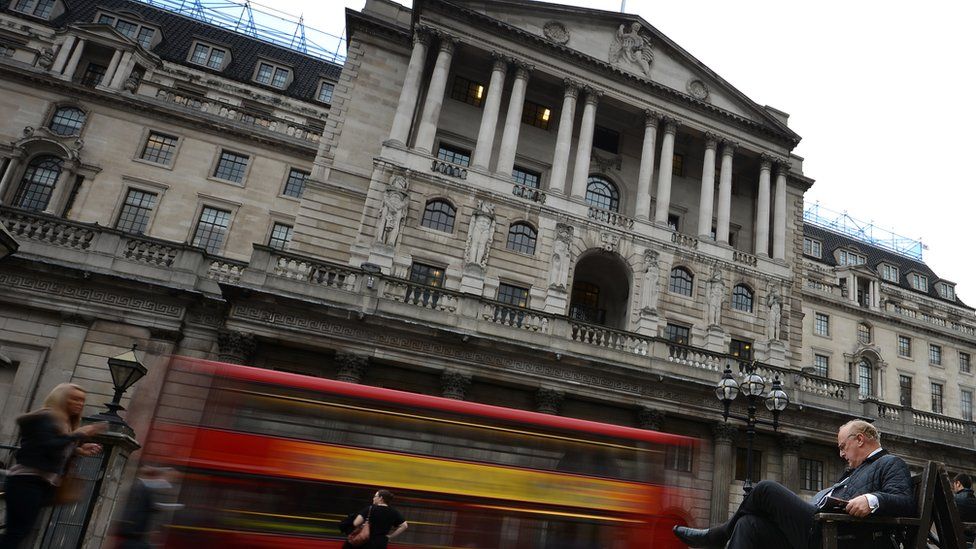The Bank of England has put up interest rates to 4.5% as it continues to try to control inflation.

In May, the Bank of England put up its main interest rate from 4.25% to 4.5% as it continues to try to control rising prices.
It was the 12th consecutive increase since November 2021.
The Bank of England is the UK's central bank. It is independent from the government.
It describes its key job as ensuring the UK has secure banknotes, stable prices, a safe banking sector and a resilient financial system .
The Bank has a target to keep inflation - the official measure of how quickly prices are rising - at 2%.
The headline CPI inflation rate has fallen back from a high of 11.1% in October 2022, but in May 2023 the rate was 8.7% - still more than four times the target.
But "core" inflation - which excludes the price of energy, food, alcohol and tobacco - rose to 7.1% in May. That was up from 6.8% in April and the highest level since 1992.
The Bank's traditional response to rising inflation is to increase the UK's official interest rate.
This influences the saving and borrowing rates charged by high street banks to individuals and businesses.
In May, the Bank put up interest rates for the 12th time in a row , increasing them to 4.5%, their highest level for almost 15 years.
Increasing interest rates can mean people are more likely to save money and less likely to borrow it.
In theory, this means they will buy fewer things, especially if they are having to pay more for things like mortgages, which should help prevent prices rising as quickly.
It also makes it harder for firms to borrow money and expand.
Alternatively, if the Bank cuts interest rates, there is less incentive to save money and borrowing becomes cheaper.
This can encourage businesses to borrow and people to go out and spend more, boosting the economy.
The Bank's Monetary Policy Committee (MPC) meets eight times a year to set rates.
After a series of preliminary meetings, the committee's nine members vote on whether to increase, reduce or hold interest rates, and their collective decision is published at noon.
Minutes of the meeting at which the decision was taken are also published.
Four times a year, the Bank also publishes a Monetary Policy Report , which sets out the economic analysis and inflation projections that the MPC uses to make its interest rate decisions.
The Bank of England also buys and sells government bonds .
Bonds are a bit like an "I owe you" from the government, which uses them to raise money to help meet its spending commitments.
In the period from the 2009 financial crisis until 2021, the Bank of England bought £875bn of government bonds. This was done through a process called quantitative easing , which was designed to reduce overall government borrowing costs, lower interest rates and stimulate spending in the economy.
The Bank also announced an emergency bond-buying programme to try to stabilise the economy after September 2022's mini-budget caused turmoil on financial markets.
Once that intervention ended, the Bank said it would go ahead with a plan - first announced in August 2022 - to sell off some of the government bonds it holds.
The Bank also:
Andrew Bailey took over as governor in 2019, having already worked at the Bank for more than 30 years.
He was the Bank's chief cashier from January 2004 until April 2011, which meant his signature appeared on billions of UK banknotes.
As well as being responsible for overseeing the Bank's main responsibilities, the governor also chairs three important committees that help it work towards its targets: the Monetary Policy Committee, the Financial Policy Committee and the Prudential Regulation Authority.
-
produces banknotes and oversees credit and debit card payments
-
regulates banks and building societies
-
monitors risks in the UK financial system and acts to reduce them, like lending to banks if they need it. It shares responsibility for this with the Treasury and financial regulator, the Financial Conduct Authority
-
stores the UK's gold reserves - 400,000 bars worth more than £200bn - as well as those of other central banks.